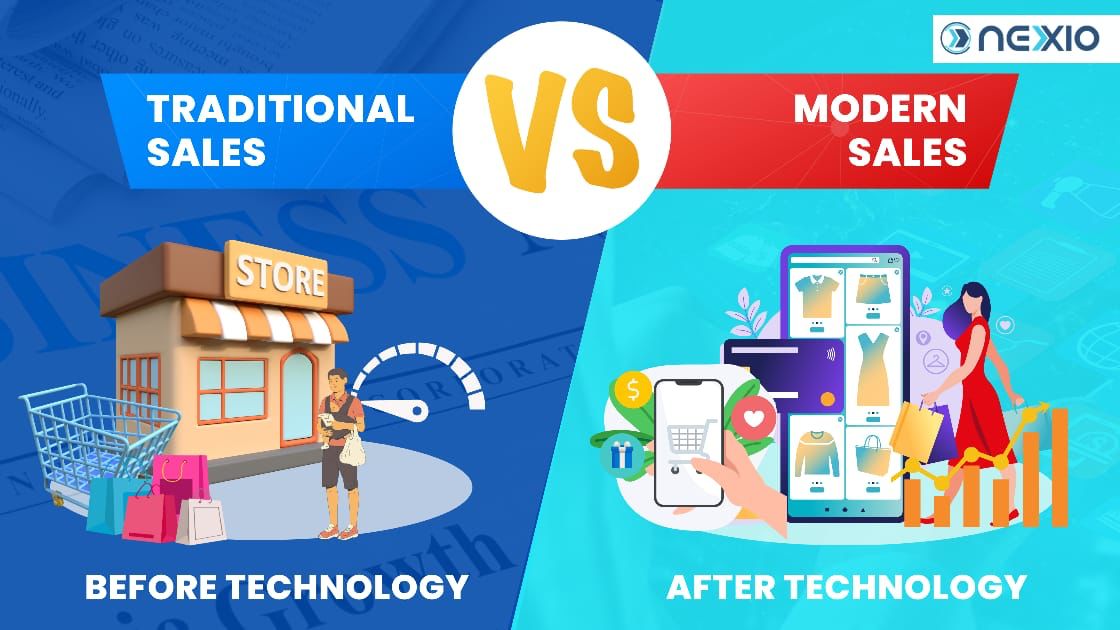The sales landscape has undergone a seismic shift with the advent of technology, reshaping the way businesses connect with and sell to their customers. In the pre-tech era, traditional sales methods dominated the scene, relying on personal relationships, face-to-face interactions, and manual processes.
In contrast, modern sales approaches are defined by technology, data analytics, and automation.
This blog will delve into the extensive realm of traditional and modern sales, exploring their nuances, evolution, and impact on businesses in the tech era.
Traditional Sales:
Before the digital revolution, traditional sales practices were the cornerstone of business interactions. Sales representatives were the linchpin, employing charm, charisma, and a profound understanding of products or services to close deals.
Let’s dissect the key characteristics of traditional sales:
- Personal Relationships:
At the heart of traditional sales was the emphasis on personal relationships. Sales reps cultivated strong connections with clients through face-to-face meetings, phone calls, and networking events.
Trust and credibility were built over time, forming the foundation of successful transactions.
- Manual Processes:
The sales process in the traditional era was predominantly manual. Handwritten notes, paper contracts, and extensive paperwork were the norm, leading to prolonged sales cycles and an increased likelihood of errors.
This manual approach often hindered efficiency and scalability.
- Limited Data Utilization:
Traditional sales struggled with limited data utilization. Comprehensive understanding of customer behavior, preferences, and market trends was a challenge, as decisions were often based on intuition rather than concrete data.
This lack of data-driven insights could result in suboptimal strategies.
- Limited Reach:
Geographical constraints posed a significant hurdle to traditional sales. Businesses were confined to local or regional markets, restricting their ability to expand globally.
Breaking free from these limitations was a formidable task in the absence of advanced communication technologies.
Modern Sales:
The digital age has ushered in a new era of sales, characterized by technological prowess, data-driven strategies, and streamlined processes. Modern sales leverage the power of the internet, automation, and artificial intelligence to enhance customer engagement and optimize sales processes.
Here are the key features of modern sales:
- Digital Presence:
In the modern sales landscape, a robust online presence is non-negotiable. Businesses harness the power of websites, social media, and online platforms to reach a global audience, transcending geographical boundaries.
The internet becomes a potent tool for brand visibility and customer outreach.
- Data-Driven Decision Making:
Modern sales thrive on data analytics.
Customer Relationship Management (CRM) systems & Sales Force Automation (SFA) systems meticulously track and analyze customer interactions, providing businesses with real-time insights.
Informed decision-making becomes a cornerstone, enabling businesses to tailor their approach based on data-driven intelligence.
- Automation:
Automation tools have revolutionized modern sales by streamlining repetitive tasks. Automated emails, chatbots, and SFA systems enhance efficiency, reduce manual workload, and ensure a consistent customer experience.
Sales teams can redirect their focus towards strategic activities, fostering innovation and growth.
- Remote Collaboration:
Technology facilitates seamless remote collaboration in modern sales. Sales teams can connect with clients and colleagues irrespective of geographical locations through video conferencing, virtual presentations, and collaborative platforms.
This flexibility enhances communication and accelerates decision-making processes.
The evolution from traditional to modern sales has been catalyzed by the relentless march of technology.
While traditional sales methods showcased effectiveness in their time, the modern approach empowers businesses to scale, adapt, and thrive in the fast-paced digital era.
Striking a delicate balance between personalized human interactions and the efficiency of technology emerges as the key to success in today’s competitive market.
As technology continues its relentless advance, the sales landscape will inevitably evolve further, presenting new opportunities and challenges for businesses to navigate.
The convergence of human connection and technological prowess will shape the future of sales, demanding agility and innovation from businesses seeking sustainable growth in the ever-changing marketplace.
Embracing the best of both worlds – the timeless art of relationship-building and the efficiency of modern tools – positions businesses to thrive in the dynamic intersection of tradition and technology.
